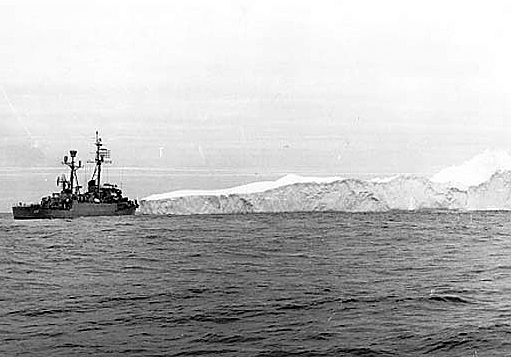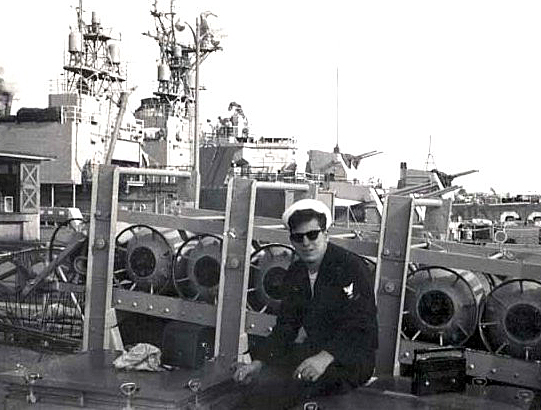Off the radarFew people know the role Navy radar picket ships played in early communications for Antarctica. Former sailor Gene Spinelli tells the story.Posted September 4, 2009
Before the high-tech days of weather satellites and the Global Positioning System (GPS), aircraft flying between Christchurch, New Zealand, and McMurdo Station During the years 1957-1968, the U.S. Navy deployed Destroyer Escort (DE) class ships for this duty, while the NZ Navy provided Loch class antisubmarine frigates for the four years it participated. The U.S. ships were World War II vintage DEs, later replaced by DE Radar (DER) class ships. The DERs were also World War II (Edsall class) DEs that were converted for radar duty in the 1950s. Built from 1943 until the end of the war for the princely sum of about $6 million each, the DERs were never intended to be in service into the 1970s. Related Article
The DER was easily distinguishable from its original World War II configuration by its unusual architecture and the addition of a second mast, Tactical Air Navigation (TACAN) gear, the ubiquitous SPS-8 height-finding radar system and an after-deck house on the 01 level. The Navy selected the Edsall class DEs for conversion because of their Fairbanks Morse diesel engine propulsion system. The ships could travel many thousands of nautical miles nonstop on a full tank of gas. It wasn’t the smoothest ride a sailor would ever experience. With a displacement of 1,700 tons — and at 306 feet long, 37 feet at the beam and about 14 foot draft — it could have been worse, and was, during Antarctic storms. In all, the Navy converted 36 Edsall class ships to DERs, and eight of them served as Operation Deep Freeze During the early Operation Deep Freeze years, one U.S. Navy picket ship would deploy to the Southern Ocean. Later in the program, the U.S. and New Zealand navies would alternate their time on station. From 1966 through 1968, the U.S. Navy provided two DERs during each season, with Dunedin, NZ, serving as the port for both ships. I don’t recall both ships being in port at the same time. Headed around the worldIn April 1965, as a newly promoted Electronics Technician Third Class (ETR3) awaiting assignment at the Brooklyn Navy Yard, I was handed orders to the USS Calcaterra, DER-390, at Newport, R.I. The chief petty officer handed me the envelope, laughed, and asked, “Do you know what a DER is?” I responded, “No,” and he explained the life of an East Coast DER sailor: Depart Newport and sail to the waters around Cuba, then sit there for 30 days tracking aircraft in and out of Cuba. The picket station was known as “Dog Rocks.” As I boarded a Greyhound bus for Newport, the bus driver asked what ship I was assigned to serve. As we entered the base, he would take us as close as possible to our ship. The only problem was the Calcaterra had sailed for Dog Rocks that morning to relieve another DER that had broken down. DERs were known for breaking down. I headed to the USS Yosemite, AD-19, and checked in at the Quarterdeck. While being processed, the petty officer of the Watch said, “You lucky dog.” I responded, “Why is that?” He said, “You’re going on a round-the-world cruise. The Calcaterra will leave Newport in August for New Zealand, completely circle the Earth on the return voyage, and return in May of next year.” I spent one month on Yosemite waiting for Calcaterra to return from Dog Rocks. So, at the tender young age of 19, I embarked on a once-in-a-lifetime experience by completely circling the planet twice; transiting the Panama and Suez canals; being inducted into the Ancient Order of the Deep by crossing the equator; then later crossing the International Date Line, the Antarctic Circle, and spending two birthdays below the Antarctic Circle.1 2 3 Next |



For USAP Participants |
For The Public |
For Researchers and EducatorsContact UsNational Science FoundationOffice of Polar Programs Geosciences Directorate 2415 Eisenhower Avenue, Suite W7100 Alexandria, VA 22314 Sign up for the NSF Office of Polar Programs newsletter and events. Feedback Form |



